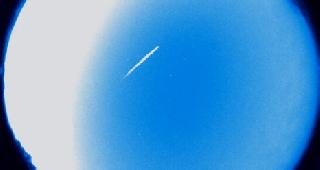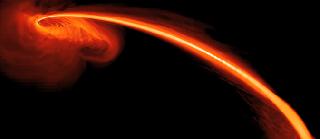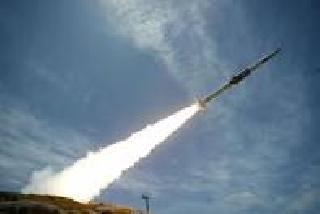
An Eta Aquarid meteor streaks over northern Georgia on April 29, 2012. A NASA photo
WASHINGTON (BNS): Cosmic fireworks will cast their spell on sky gazers on the night of May 5 when the annual Eta Aquarid meteor shower peaks up as the Earth passes through the debris of Comet Halley.
The meteor shower, which occurs when cosmic bits burn up in our atmosphere when Earth passes through the debris trail from Halley's Comet, will reach its peak on the night of May 5 and into the morning of May 6.
The meteor rates would be about 40-60 meteors per hour under ideal conditions, according to NASA.
However, a full Moon occurring on May 6 could partly dampen the cosmic dazzle as the fainter Eta Aquarid meteors would not be visible.
Nevertheless, the Etas have a decent rate -- 60 per hour -- and contain quite a few fireballs, the space agency said which has already detected several bright Eta Aquarid meteors this year.
The Eta Aquarid meteor shower gets its name because the radiant -- or direction of origin -- of the meteors appears to come from the constellation Aquarius.
Eta Aquarids shower is caused by flakes of dust left over by Comet Halley, which last visited Earth in 1986 and won't be visible again until the middle of 2061.
Although the comet is now far away from our planet, it has left behind a stream of dust. Earth passes through this stream twice a year and in May, it produces the Eta Aquarid meteor shower.
 Previous Article
Previous Article Next Article
Next Article












The Indian Air Force, in its flight trials evaluation report submitted before the Defence Ministry l..
view articleAn insight into the Medium Multi-Role Combat Aircraft competition...
view articleSky enthusiasts can now spot the International Space Station (ISS) commanded by Indian-American astr..
view article